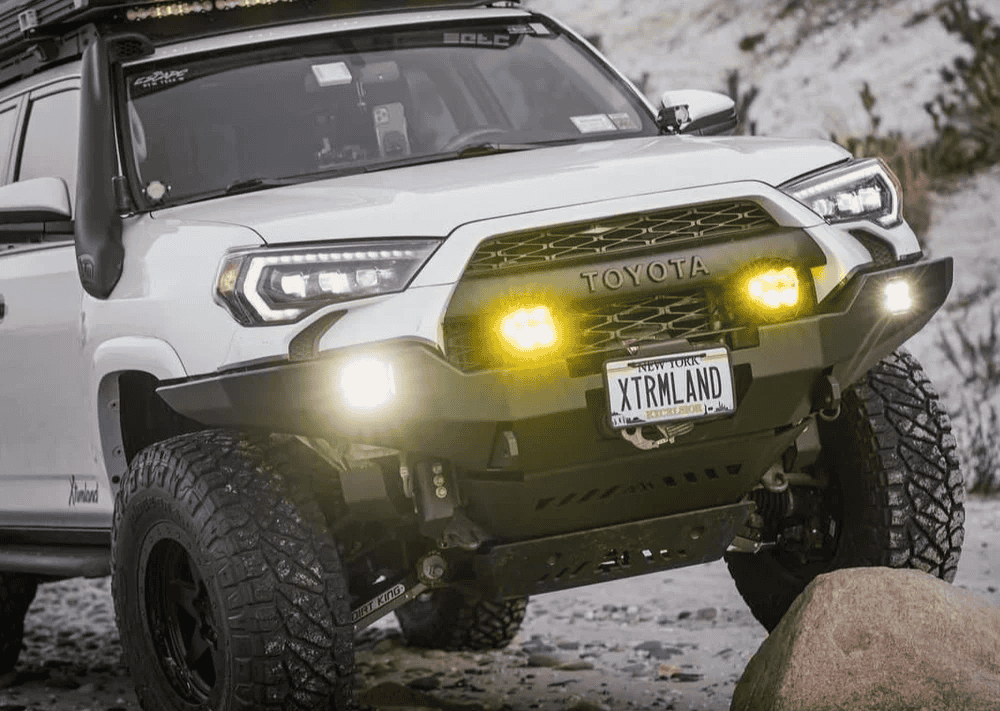Overland Vehicles

Rough trails punish stock components with constant vibration, sharp impacts, and rapid heat cycles. An off road suspension upgrade aims to increase wheel travel, maintain tire contact, and manage energy as the chassis moves over uneven ground. The result is better traction, quicker recovery after bumps, and less driver fatigue.
Suspension tuning is a balance. Softer springs increase compliance but can allow excessive body motion. Stiffer rates hold weight but can skip across chatter and small rocks. Shocks add control by converting motion into heat, keeping the vehicle stable between impacts. Geometry corrections keep steering precise and reduce wandering at speed.
Success starts with honest goals. Consider your terrain, how often you carry gear, and the tire size you plan to run. The best upgrade aligns spring rates, shock valving, and alignment targets so the system works as a whole rather than as a collection of parts.
Choose components with a clear view of how they interact. Changing springs without appropriate damping or alignment can produce harshness, understeer, or poor braking stability. A thoughtful plan ties every part to a measurable outcome like increased travel, improved steering feel, or sustained performance on long descents.
Shocks control motion. Monotube designs shed heat quickly and deliver crisp response. Twin tube units can offer a more forgiving ride in rocky terrain. Remote reservoir or piggyback options increase fluid volume, fight heat fade, and maintain damping on long, rough climbs. Adjustable compression and rebound let you dial behavior for washboard, whoops, or loaded highway travel. Rebuildable shocks extend lifespan if you service them at regular intervals.
Springs carry weight and set the baseline ride height. Coil springs are common on modern platforms and can be progressive to soften small bumps while firming under load. Leaf springs combine support and lateral control on many trucks and vans, and can be re-arched or paired with add-a-leaf options to match payload. Air springs can assist when cargo varies across trips, but they still need correct damping and bump stop tuning. Always match spring rate to real curb weight and gear, not just brochure numbers.
Lift height changes steering and driveline angles. Add caster on independent front suspension to restore straight-line stability after a lift. Correct camber and toe to protect tires and sharpen turn-in. On solid axle vehicles, consider track bar and drag link angles to reduce bump steer. Panhard geometry influences roll center and body lean. Extended control arms or corrected ball joint locations can recenter wheels in the arch and restore proper anti-dive and anti-squat behavior.
Terrain defines the tuning approach. Desert routes reward additional compression damping and heat capacity for repeated hits. Forest trails favor supple low-speed control to absorb roots and rocks without tossing the cabin. Mountain travel with long grades benefits from shocks that resist fade and springs that hold steady ride height under constant load. Sand demands float from proper tire pressure, matched damping, and smooth throttle rather than excess stiffness.
Tires and suspension work together. Larger tires add unsprung mass and leverage, which can overwhelm stock shocks. Recalibrate damping to keep contact patches planted. Bump stops are more than safety parts. Timed engagement can slow the last inches of travel, protecting components and smoothing landings. Sway bars influence body roll. Quick disconnects or softer rates can increase articulation, while firmer options help when towing or in crosswinds.
Plan for reliability. Verify brake line length, shock travel limits, and droop angles. Inspect CVs and driveline slip joints after lift changes. Consider underbody protection to guard mounts and control arm pivots. Keep service intervals tight for shocks, bushings, and steering joints, and document baseline alignment so future checks spot issues early.
When you are ready to translate specs into a dependable setup, a well executed build saves time and avoids costly rework. OZK Customs designs and installs suspension systems that match real-world weight, tire size, and intended routes. Explore our approach to capable builds on Overland Rigs, and see how tailored suspension is integrated with power systems, storage, and protection.
If you want help selecting spring rates, shock types, and geometry corrections for a specific platform, our team can walk you through options that fit your goals. Learn how we configure complete rigs through our Custom Overland Upfit experience, where suspension is planned alongside wheels, tires, and recovery gear for a cohesive result.
Curious about our process and the hands behind the work in Fayetteville? Read our story and standards on Why Choose OZK. Then share your terrain, payload, and travel style, and we will craft a suspension plan that holds steady on the highway and stays composed far beyond the pavement.
Start strong and finish confident. Tell us how you travel, and we will build a suspension that keeps you comfortable, protects components, and carries your gear without drama. OZK Customs specializes in complete adventure vehicles and overland rigs, including suspension upgrades tuned for your route and your weight. Fill out the form and let us design a system that makes the rough path feel smooth.
Ready to turn washboard chatter into confident control? Share your goals and specs, and our team will map a suspension plan that suits your terrain, payload, and driving style. Fill out the form to start your custom build path with OZK Customs.
ADDRESS:
6159 E Huntsville Rd, Fayetteville, AR 72701
PHONE:
(479) 326-9200
EMAIL:
info@ozkvans.com